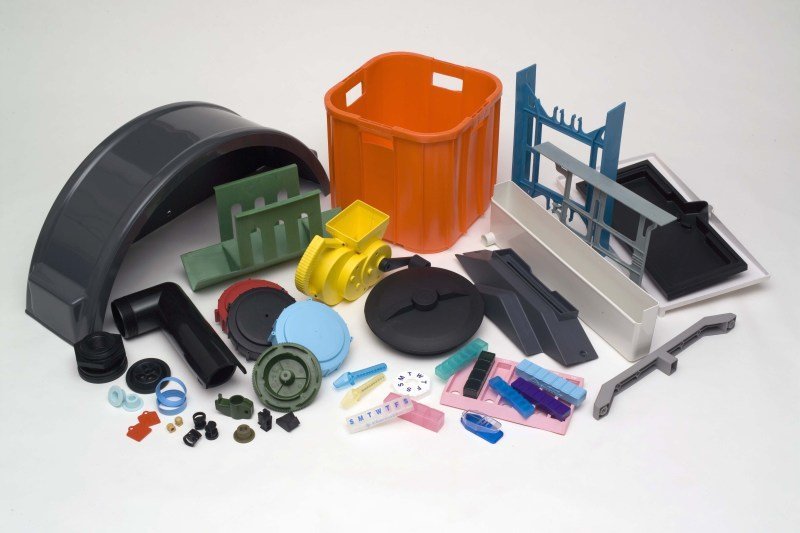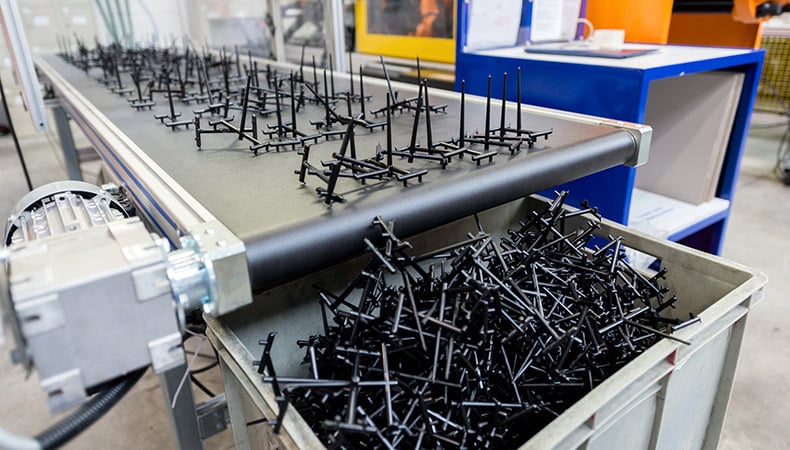Recognizing the Plastic Injection Molding Process for High-Quality Manufacturing
Recognizing the Plastic Injection Molding Process for High-Quality Manufacturing
Blog Article
The Future of Plastic Shot Molding: Technologies and fads to View
As the plastic shot molding market advances, several essential patterns are emerging that pledge to improve its landscape. Automation and clever manufacturing techniques are readied to improve efficiency, while the change in the direction of lasting products shows an expanding ecological awareness. Innovations in 3D printing are paving the method for unmatched style flexibility. These innovations also bring forth obstacles that call for cautious consideration. Understanding how these elements will certainly connect and affect future methods is essential for stakeholders seeking to browse this transformative period properly.
Automation and Smart Manufacturing
As the plastic injection molding market develops, automation and clever manufacturing are taking spotlight, changing production procedures - Plastic Injection Molding. The assimilation of advanced modern technologies such as robotics, IoT (Web of Points), and man-made intelligence is making it possible for makers to improve performance, decrease functional costs, and boost product high quality. Automated systems streamline process, reducing hand-operated intervention and boosting throughput, which is vital in satisfying the rising demand for quick production cycles
Smart producing modern technologies help with real-time surveillance and information analysis, enabling firms to optimize maker efficiency and predict maintenance demands. This proactive method not just decreases downtime but likewise expands the lifespan of equipment. Moreover, the usage of collective robots, or cobots, boosts the versatility of assembly line, making it possible for workers and makers to operate side-by-side securely and successfully.
The adoption of automation in plastic injection molding is not simply a pattern however a critical vital for organizations intending to remain affordable in a global market. By harnessing these technologies, manufacturers can achieve greater accuracy, reduce waste, and adapt swiftly to transforming consumer needs, placing themselves for sustainable growth in an increasingly automated future.
Lasting Products and Practices
The push in the direction of automation and clever production has paved the means for a better emphasis on sustainable products and techniques within the plastic shot molding industry. Companies are significantly looking for environment-friendly options to standard petroleum-based plastics, causing the adoption of recycled and bio-based materials. These lasting materials not only lower environmental impact yet likewise align with customer need for greener products.

Additionally, partnership in between suppliers, product distributors, and ecological companies is cultivating advancement in the growth of lasting materials that satisfy performance requirements without jeopardizing quality. As laws around plastic usage come to be more stringent, the industry is poised to adjust by accepting these sustainable approaches, making sure long-lasting stability and lowering dependence on non-renewable resources. The integration of sustainability right into plastic shot molding is not simply a trend; it is becoming a vital part of company obligation and operational quality.
Developments in 3D Printing
Recent advancements in 3D printing modern technology are substantially transforming the landscape of plastic injection molding. Difficult or once tough to accomplish through standard methods, the assimilation advice of additive manufacturing procedures allows for the fast prototyping of complex geometries that were. This ability not only speeds up product advancement cycles but likewise reduces material waste, straightening with the growing need for sustainable manufacturing techniques
Furthermore, the appearance of hybrid production techniques, which integrate 3D printing and shot molding, offers makers the capacity to create complex layouts while preserving the performance of mass production. This method makes it possible for the production of personalized components customized to specific client needs without sacrificing the speed and scalability that shot molding offers.
Furthermore, innovations in materials, such as high-performance polymers and composites particularly created for 3D printing, are boosting the functional capacities of printed elements. These materials can withstand better stress and anxiety and display boosted thermal residential properties, making them appropriate for even more requiring applications.
As 3D printing remains to evolve, its integration into plastic injection molding processes promises to enhance productivity, lower prices, and great post to read foster innovation in product design, placing manufacturers to better fulfill the obstacles of an affordable market.
Information Analytics and IoT Assimilation
Information analytics and the integration of the Internet of Points (IoT) are transforming plastic injection molding by providing manufacturers with unprecedented understandings right into their procedures. By leveraging real-time data gathered from interconnected devices and sensors, manufacturers can monitor efficiency metrics, recognize ineffectiveness, and enhance production procedures. This data-driven strategy assists in anticipating maintenance, reducing downtime and extending tools life expectancy.
Additionally, IoT integration enables improved quality assurance. By continuously tracking image source variables such as cycle, temperature level, and stress times, producers can swiftly discover deviations from developed specifications and make modifications in actual time. This not just enhances product consistency but also lowers waste and scrap rates.
The blend of data analytics and IoT technologies likewise empowers makers to adopt even more active production methods. With access to detailed data analytics, organizations can react to market demands with higher flexibility, changing manufacturing routines and setups as needed. This versatility is essential in a quickly transforming manufacturing landscape.

Customization and Design Flexibility
Just how can modification and layout adaptability boost the competition of plastic shot molding? In a significantly varied market, the capability to use tailored services is extremely important. Modification allows producers to satisfy certain customer requirements, fitting distinct dimensions, forms, and capabilities that typical items may not satisfy. This flexibility not just cultivates client loyalty yet likewise opens opportunities for new business possibilities throughout various sectors, from auto to durable goods.
Innovations in style modern technologies, such as computer-aided style (CAD) and rapid prototyping, additional bolster this fad. These tools allow designers to create intricate geometries and elaborate patterns, which can be flawlessly integrated right into the production process. As an outcome, producers can react promptly to altering customer preferences and market needs.
Moreover, the application of modular tooling systems boosts design versatility, permitting for quicker changes in between various item designs without comprehensive downtime. This flexibility can lead to decreased preparations and reduced production costs, making business extra agile and competitive. Ultimately, accepting modification and design flexibility in plastic injection molding not only raises item offerings yet additionally strengthens market positioning in an ever-evolving landscape.
Conclusion
The future of plastic injection molding is characterized by significant advancements in automation, lasting techniques, and ingenious materials. Customization through modular tooling and rapid prototyping will certainly make it possible for makers to stay receptive and competitive to the vibrant needs of the market.

The future of plastic shot molding is identified by substantial advancements in automation, sustainable techniques, and cutting-edge materials.
Report this page